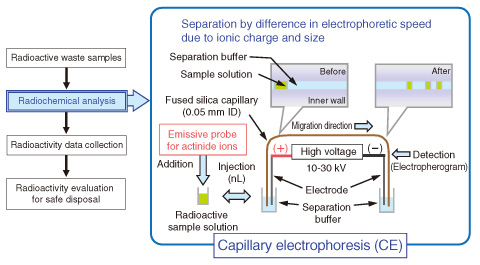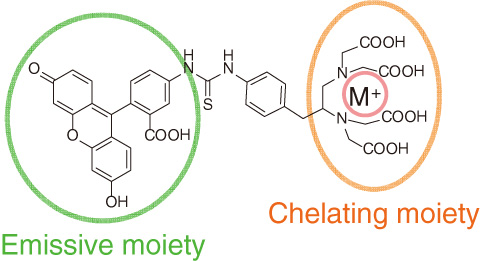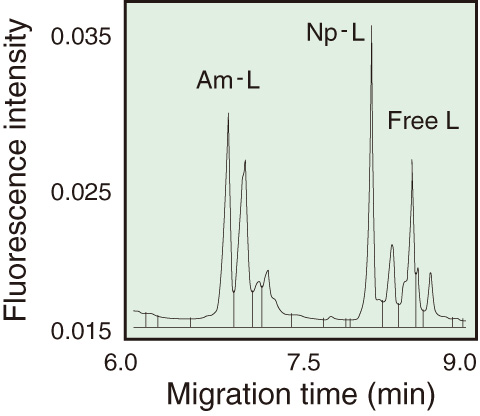
Fig.10-4 Development of a simple and rapid analytical method using capillary electrophoresis

Fig.10-5 Emissive probe L for actinide ions

Fig.10-6 Typical electropherogram of actinide complexes of Am and Np
For the disposal of radioactive wastes, it is necessary to collect radioactivity data from radioactive waste samples. To reduce the radiation exposure of operators during the analytical procedure, a simple and rapid analytical method of detecting actinides using capillary electrophoresis (CE) has been developed (Fig.10-4). Although CE has been employed for the analysis of ionic species, including actinide ions, and has the advantages of high separation efficiency and simplicity, there is no report of a high-sensitivity CE method amenable to practical use for radioactive waste samples, to our knowledge.
This study focuses on the capillary electrophoresis-laser-induced fluorescent detection method (CE-LIF) for the purpose of dramatically improving the sensitivity. New emissive probes for the actinide ions, americium (Am) and neptunium (Np), suitable for CE-LIF were developed for the first time. The emissive probes designed for detecting actinides by CE-LIF are composed of an emissive moiety for improved sensitivity, a chelating moiety for connecting with actinide ions, and a spacer between them. A chelating moiety, the more important moiety, is required for stability and prevents dissociation during migration. In this study, seven types of newly synthesized emissive probes with different chelating moieties were applied to CE-LIF. As a result, an acyclic hexadentate probe (Fig.10-5) successfully detected and separated Am and Np (Fig.10-6). Detection limits of 11 ppt and 4.7 ppt were obtained for Am and Np, respectively. The sensitivity of this fluorescent detection method was about 90000-200000 times greater than that of a conventional UV detection method. This method, with its short analytical time (within 10 min), has great potential for application to analysis of radioactive waste samples for the reduction of the radiation exposure of operators.
Our research was performed as a part of a collaborative study with Saitama University, “Separation and Detection System for Actinide Ions by Capillary Electrophoresis Using Novel Fluorescent Probes.”
<Previous: 10-1 | Next: 11 Computational Science and E-Systems Research >